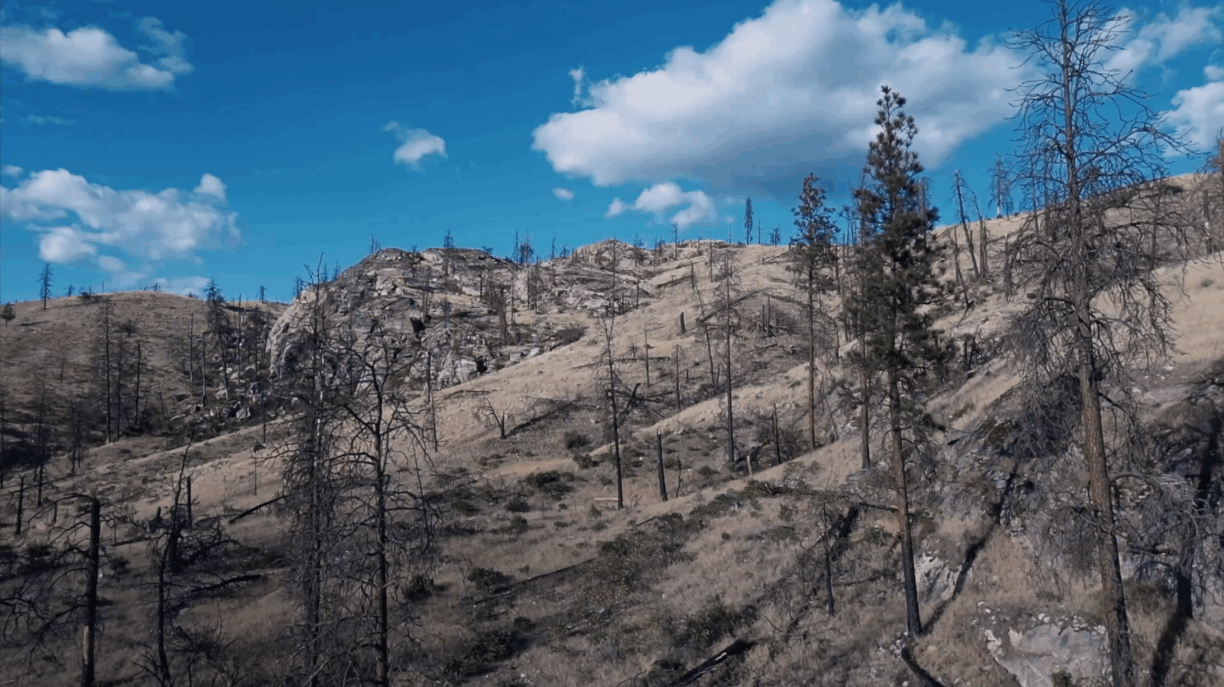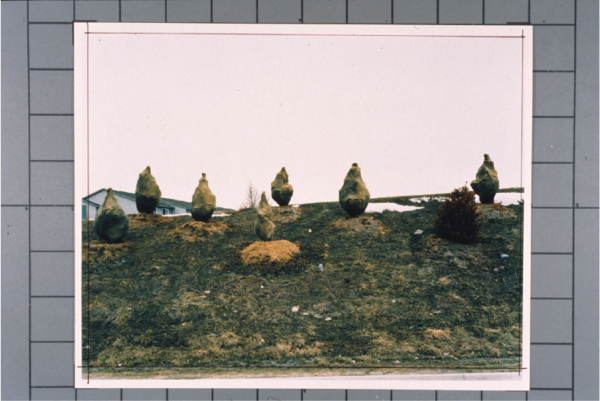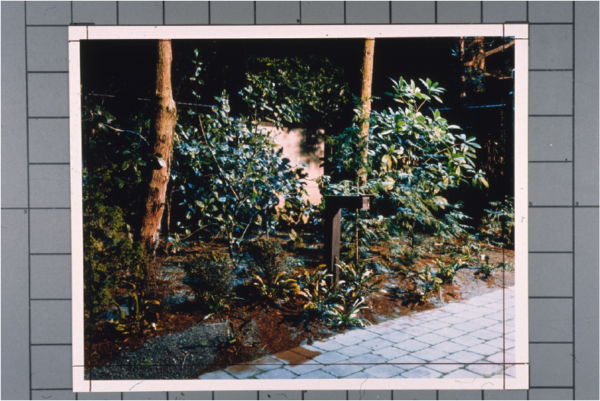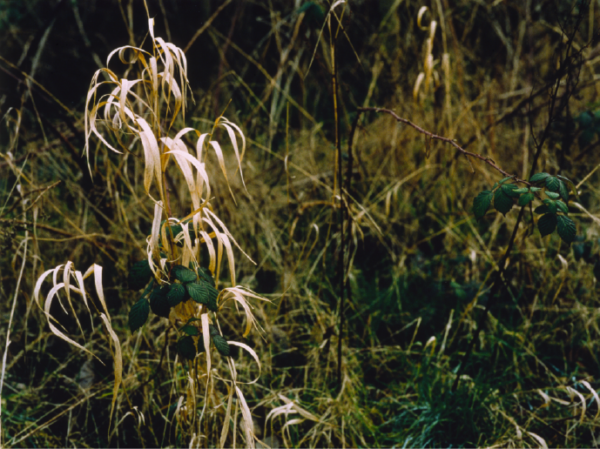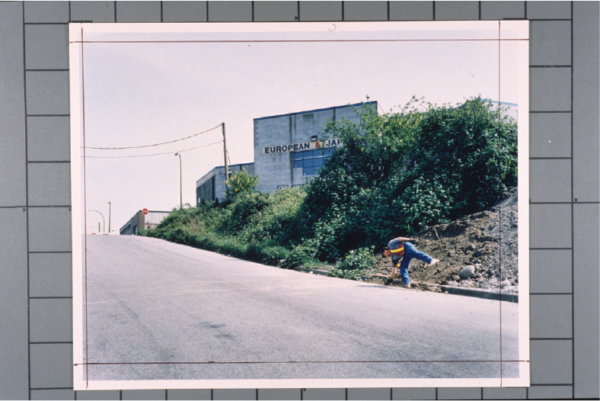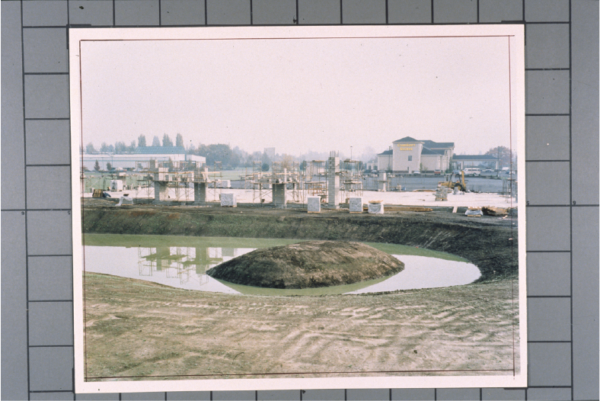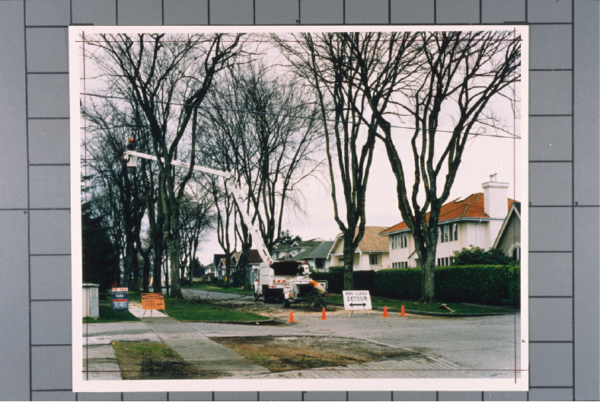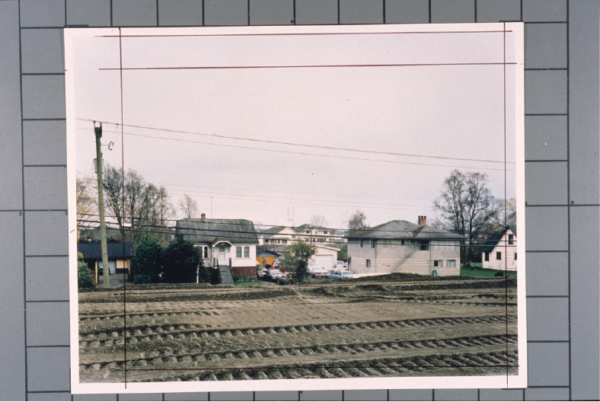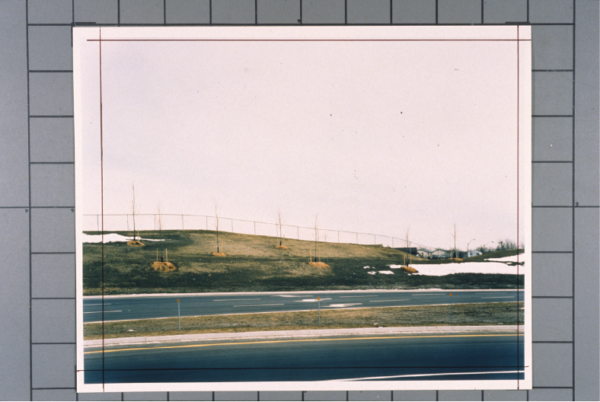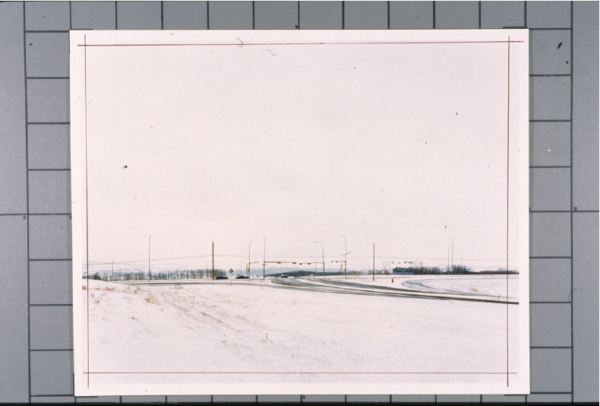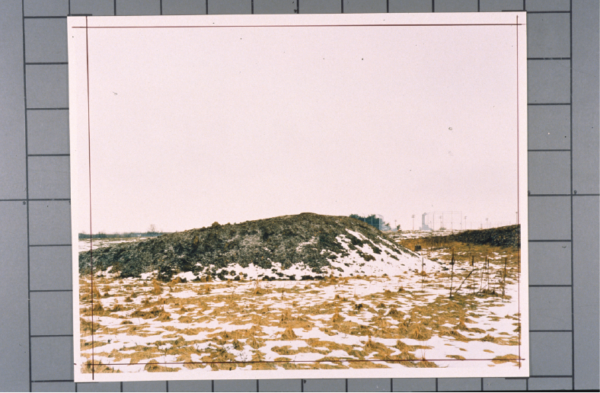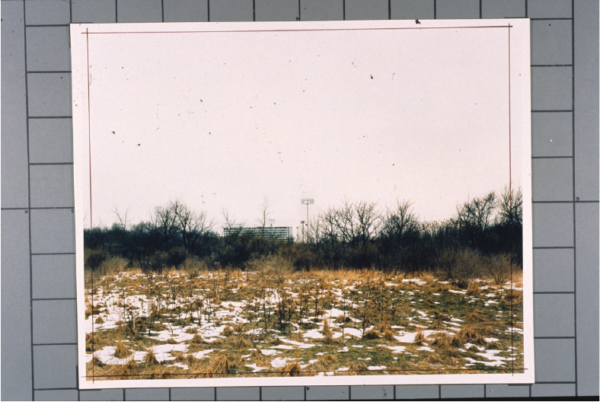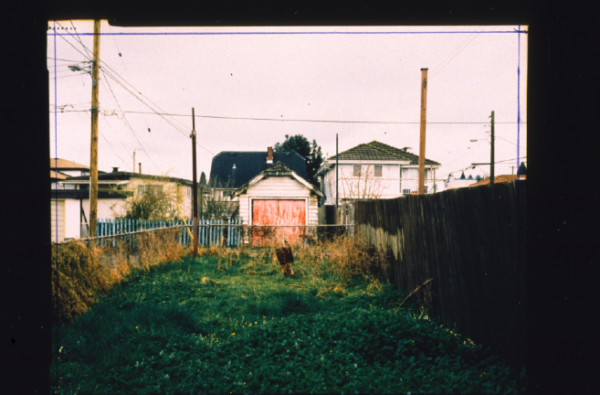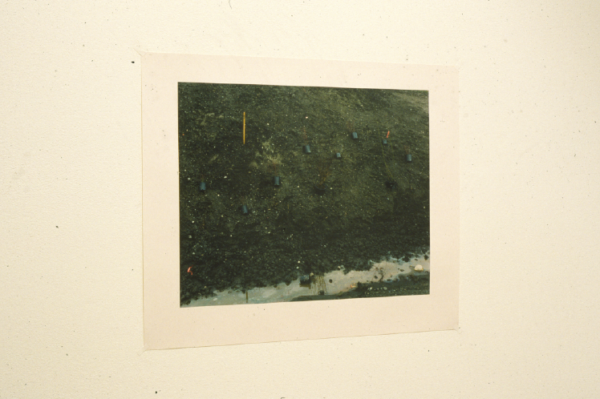- Photographs –Evan Lee
- Photographs –Evan Lee
- Photographs –Evan Lee
- Photographs –Evan Lee
Photographs
Evan Lee
12 February–
11 March 2000
Curated by: Reid Shier


Evan Lee, Photographs, exhibition at Or Gallery, 2000. Courtesy of Artist.


Evan Lee, Photographs, exhibition at Or Gallery, 2000. Courtesy of Artist.
Photographs
Evan Lee
Curated by: Reid Shier
The OR Gallery is proud to present a solo exhibition of photographs by Vancouver based artist Evan Lee. Lee is a graduate student at the University of British Columbia.
In Michael Antonioni’s film Blow Up, a photograph that was thought to have contained forensic evidence was enlarged repeatedly until the viewer began to see what he wanted in the patterns of grain—like clouds in the sky. Evan Lee’s photographs play on the concept of the quasi-scientific, so that they hover between the rational and irrational (the former accomplished by the use of photography, and the latter by means of faith, or aesthetic manipulation). Early childhood is often filled with a kind of scientific wonderment, and Lee evokes that early pre-cognitive mystery by making pictures about things which we logically understand, but might constantly re-evaluate: luminance, buoyancy, transparency and chroma.
The Gospel of Pictures:
A Look at the Mechanisms of Interiority and Worldliness in the Threshold of the Photographs of Evan Lee
by M. Somani
Critical discourse on photography lives in a twilight of limitations and possibilities, a twilight that gives the practice of photography a comfortable home and refuge in its state of perpetual crisis. The most striking areas of confusion deal primarily with how the subjective/objective characteristics of photographs are read: the position and psyche of its author at the moment of capture—the moment of infinitesimal duration; the mechanism of the camera and the process of realization and development; and lastly, the product of his or her endeavour, the picture itself. Ascribed to these functions/motions of the photographer—in collusion with the mechanical apparatus—is the assumed lack of compulsion behind the photographic mark, and how this is at best read as a more subtle, and perhaps worldly, form of deliberateness. In virtual opposition to this lies of course the ever-present, deliberate, psychic mark of painting, a taunting spectre whose critique of photography remains forever silently effective for those seeking some kind of equivalence between past and present media. It is a strange form of justice to which photography is subject. Painting, having been historically lured by the ‘modern’ and ’popular’ surface of photography and the print to its own eventual demise, rises from its proclaimed grave to take its place in the conscience of photography. Indeed, the practice of painting today comes very much from this point of a conscience: each medium acknowledges the other in so many ways, but always with, as it were, a hidden inferiority complex, which brings even greater attention to their own deficits. It may to some degree be a false problem, yet photography’s continual crisis, not only with painting but with other media including the history of photography itself, shows little sign of wear.
Radical change in photography is a contradiction in form, and it may need to be recognized that discourse on photographic development has become a discourse of change primarily in perception. What could be suggested is that this critique, born out of the recognition of lack in the photograph (at a time when loss of self and God was culturally well entrenched), is in contemporary practice continually circumvented by the medium’s own methods of reason. Photography’s functional mechanisms in this sense have the greatest potential to create moments of believable subjective “grace”—accomplished by a critique of reason through reason. The world implicates everyone in its evolution of events: every moment is a moment of complicity of the individual with the world, and of faith. As the eighteenth century German anti-enlightenment philosopher J.G. Hamann stated-against the contemporary belief of creating a systemic knowledge of the world based upon reason-our own existence and everything around us can never be proven, but must be believed. As simple as it may sound (the Cartesian subject robbed of intellect, and forced to choose between absurdity and practicality on the terms of faith), this point of view in fact stands within an alternative history of practice and thought which may to some extent be called ‘the hidden discourse’. Lest it be thought that the word ‘hidden’ here refers to a pure, moralistic form of art—this in fact is not, and cannot, be the case. Complicity, as mentioned above, prevents any clear separation with social circumstance (which includes the art world), but the strength of the ‘hidden’ discourse is that it functions all the more critically as a symptom of those same circumstances, a symptom which increasingly in art is becoming pre-meditated and deliberate. It is present in much of contemporary practice but little recognized and acknowledged.
What interests me about the pictures by Evan Lee is how they quietly explore the suspension of disbelief within the possibilities and inadequacies of photography. This is, of course, only one aspect of the pictures, but as captured moments they occasionally present the kind of hidden qualities I speak of, which rise to the surface here and there. The photographic moment is inherently imbued with a moment of belief in its perception of the world. This function is, further, purely mechanical and prone to indifference. From its obvious limitation of always existing as fragment, and by its false comparative values with real experience this moment of belief must, in a sense, be taken for what it is not, and accepted on those terms: photographs as fictions of the world. What they tell us, if anything, must at first be believed before evaluated. Here the lack of compulsion in the mark, its so-called objectivity (and indifference), has its greatest influence, pitted as it is against the potential depth offered by the project, and/or the body of work. There is a deathly air around a photograph, and even looking past this ready-made quality, this patheticism of the surface continues to influence our “belief” and taint the conviction of the artist present in the picture. Just as the objectivity of the photographic capture was previously described as circumvented by its own reason, the mutant process I am describing would have the resulting moment of subjective “grace” itself become a site of doubt. These, I think, are the reciprocal conditions of doubt and faith under which Lee takes his pictures.
In what area of experience, of living, does this belief find the most consistent expression? One answer may lie in our most habitual, common, and automatic motions. Everyday objects are hierarchized primarily through their use value, and our engagement with them is for the most part influenced by this value. With the mundane aspects of our lives the same applies. In these habitual moments of experience faith takes precedence over calculation and reason, and they are the closest we come to achieving equivalence with our surroundings, with nature. This realm of experience is saturated with (often banal) instances of faith, and for Lee this space become approachable in order to depict instances where our suspension of disbelief is entangled within moments of possible poetic absorption. In most of the pictures in this exhibition there is a close proximity to the familial home and the studio (and in the case of 40 Armoured Cars- somewhere in between), as if the artist only needed to look close at hand, in a process of exclusion rather than inclusion. In Lee’s focus there is a strong mark of the surrealist, but without the psychedelic manipulation of the subjects or the form of the pictures. They are made to speak through the care with which they seem arranged—on their own terms, without formal manipulation—to become estranged and, at times hallucinatory. (In this regard I think specifically of New Sneakers.) They are then immediately brought back by their familiarity, their myth subsequently dispelled. Lee’s photographs explore these events relating to the habitual, and the objects surrounding them to intensify the picture’s power of expression regarding the pictorial suspension of disbelief, and to further the compulsion of the photographic mark, that often-cited weakness of the photographic surface.
The deliberate and intimate quality of the pictures comes through the manipulation, and sometimes central placement of objects. Their generally modest scale reinforce this, and sometimes inadvertently through their standard-format size makes some represented objects approach the grotesque. Lee’s picture making is strangely suited to this pursuit of the chosen moment of representation (and by its duration of focus made unnatural) and how compulsion is expressed though it, as proof and witness of the world through a particular psyche, one which incessantly strives for the beautiful. Beauty and faith, two terms that are maddeningly unclear and whose conditions remain just beyond our grasp, hover somewhere between clarity/truth and kitsch. They find parallels in photography, which can only depict these aspects somewhere below the image’s surface. The representation of beauty may not be beautiful in itself, though it is here that I would bring in the importance of the momentary suspension of this doubt. Like photography, the terms of beauty and faith deal mainly with threshold conditions that make the exploration of them so appropriate (in some ways absurd, even) for photography. I find that the metaphor of the threshold can in certain moments be equally translated to and projected upon the mundane techniques and mechanisms of photography. The threshold, which promises but rarely delivers in the way we would ideally want (through a clear presentation that we cannot imagine, and therefore do not know)-is part of the weight of living. Further, the conditions of beauty that we speak of is implicated by its reference to the history of pre-photographic images, commercial imagery which includes photography, cinema, and TV. But has this basic function not always been so? Conditions of beauty differ and change historically in every field of art.. Likewise, their interpretation (however disputable) is always retrospective and anachronistic. It would be presumptuous therefore to know precisely what the elusive qualities of beauty would be presently, and this very “unknowablility” bestows upon it an aura of the greatest criticality and importance to our time. Its potential for flux, for agility in means of communication, from the sublime to the common, and beyond, that is what makes it (even in times of the highest social conflict) a present and relevant opposition to the presumptuous didacticism of both criticism and the social order at large. The notions of beauty and faith must, by this function, remain ill defined, grasped best by chance and intuition.
Lee’s pictures are explicitly oriented in the onset of possible narratives—which remain possibilities, and this need to interpret a story begins to wear with time. It is instead replaced by a self-reflexive story about the process making of the piece, its motivations and intentions, but this too becomes less compelling with time. Clarity here becomes dialectic process that ultimately breeds doubt, and by an odd collusion of intent, a reciprocal engagement that asks us to suspend that doubt. The represented scenes themselves speak from such a voice: a patch of grass becomes the site of a subtle, other-worldly occurrence, two balloons frame and conceal the intangible substance of air. These moments of wonder and interiority are never too comfortable, and by their familiarity and prosaic terminology, they tend to dispel a self-sufficient pictorial drama. Having said that, they surely intend to evoke, and this in my opinion they do quite successfully.
Where does this leave us? The answer is perhaps precisely where the pictures want us to be. We stand at a point where the sincerity of the photographs as objects must be taken by a perceptual leap of faith, or not. The scenario becomes a repetition of itself at each turn, a loop from which there is escape only at a certain price. This becomes a stance that asks, however subtly, no small question. It involves, from the voice of the pictures themselves, the divergence of fact and truth for the reception of the photographic fragment. The two, fact and truth, at some point cannot be equated in the ephemeral world of these pictures. Either there is the fact that I am just looking at a representation of some sneakers, or there is the truth that certainly there is more to these shoes than their normal symbolic investment. This latter tangent, which historically could even be linked to Van Gogh’s painting of his worn shoes, may say something about the conditions of living today-its increased hidden values of pathos, that are nonetheless there, perhaps more intensified because of its being ‘somewhere below the surface’. It is this point of divergence which photography can depict, but it is its limit as well, since photography cannot get beyond the uncomfortable situation of having to make such choices. Yet to some degree I think that we automatically do, intuitively, if only for a brief second.
